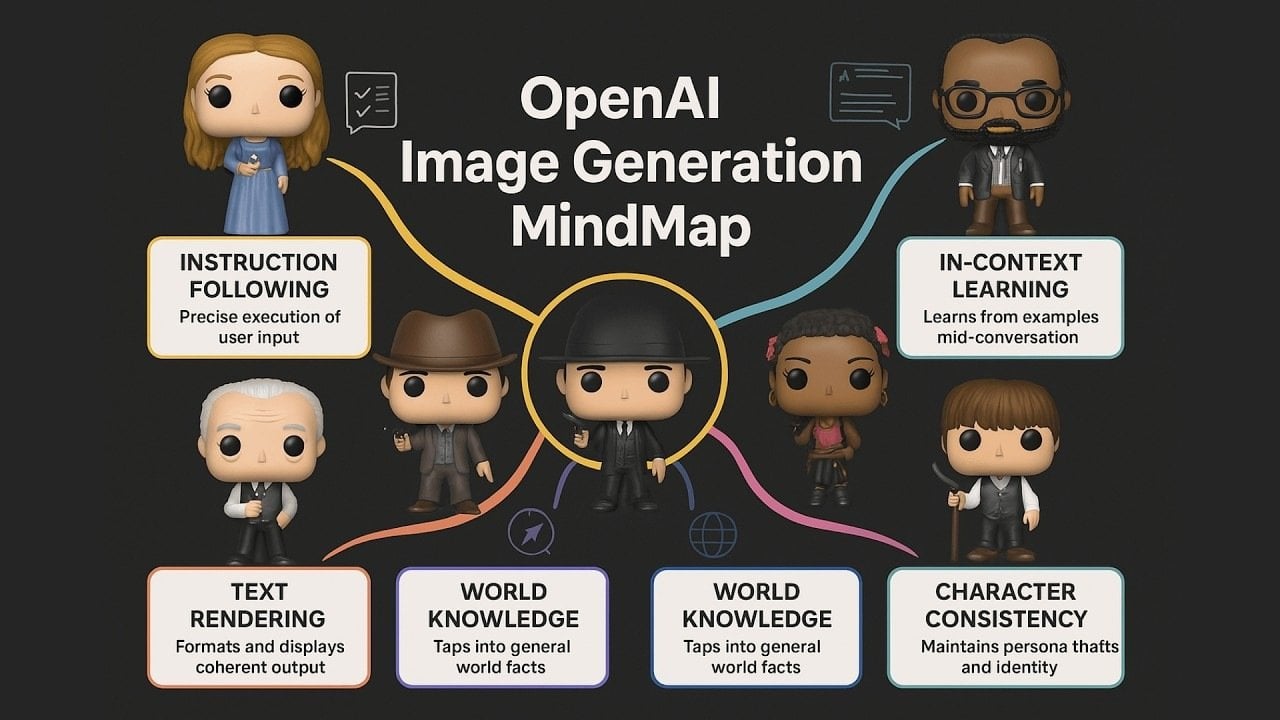Creating Stunning Mind Maps with OpenAI’s Image Generator

Exploring the Capabilities of OpenAI’s Latest Image Generation Model
OpenAI has unveiled a groundbreaking image generation model that emphasizes AI-driven creativity. It boasts remarkable features like instruction-following, text rendering, and character consistency, making it a valuable tool for creating visually detailed outputs, such as mind maps. This innovative model employs advanced techniques including autoregressive modeling and in-context learning, allowing for high customization and precision. Below are insights into its standout functionalities and areas for further enhancement.
Superior Instruction-Following Abilities
One of the remarkable strengths of this model is its capacity to follow detailed instructions with remarkable accuracy. Users can generate outputs that closely align with their specifications simply by providing clear prompts. This capability is enhanced through multi-turn interactions, where users can refine their requests based on previous outputs.
For instance, if the generated mind map initially lacks clarity or misses essential components, users can modify their prompts in subsequent iterations. This iterative approach ensures that the final product meets the user’s expectations, making the model adaptable for a variety of needs. Its skill in managing complex instructions makes it an asset for professionals and creatives alike.
Advanced Image Generation Techniques
The model’s ability to produce high-quality visuals is a result of sophisticated techniques like autoregressive modeling and diffusion methods. These approaches facilitate the generation of intricate and visually appealing images while maintaining precision. Some of the key features include:
- Enhanced Text Rendering: Labels and notes within mind maps appear clearer and more consistent, addressing a common issue with AI-generated visuals.
- Character Consistency: Recurring themes or characters exhibit a uniform appearance across images, enhancing visual coherence.
- Transparent Layers: This feature allows for the seamless overlaying of various elements, facilitating the creation of complex visuals with multiple components.
- Stylistic Adaptation: Outputs can be customized to reflect specific aesthetics, ranging from minimalistic designs to more elaborate styles influenced by renowned artists like Studio Ghibli.
These advancements afford the model versatility, catering to both professional and creative applications.
Creating and Customizing Mind Maps
The model can effortlessly transform outlines or textual descriptions into aesthetically pleasing, full-color mind maps. Utilizing in-context learning, it adjusts its output based on reference examples or detailed descriptions of desired layouts. For instance, if a user supplies a sample mind map or outlines a preferred structure, the model tailors its generation process accordingly.
Another noteworthy aspect is customization. Users are encouraged to explore different styles, themes, and visual elements, allowing for the creation of unique outputs. Whether crafting a strategic mind map for a business or an educational one, the model provides flexibility to meet a broad spectrum of needs. However, while visual elements are impressive, there may be occasional inaccuracies in text details, necessitating manual edits to ensure accuracy.
Limitations to Keep in Mind
Despite its strengths, this model has certain limitations that users should recognize. OpenAI has not released comprehensive technical documentation, leaving some elements of its functionality ambiguous, particularly regarding the methods it employs to rewrite or enhance prompts. Also, while text rendering and character consistency show improvement, there are still instances of errors in finer details, which can affect the reliability of outputs in critical scenarios.
Additionally, the model’s dependence on user input for refinement means that achieving optimal outputs requires engagement and expertise from the user. This highlights the importance of thorough review and adjustment, especially when working on professional or high-stakes projects.
Future Implications and Opportunities
The launch of this model signifies the growing potential for AI in creative and educational domains. Its capability to produce complex, visually rich outputs, like mind maps, suggests exciting opportunities in fields such as education, design, and business. Educators can utilize the model to create compelling teaching materials, designers can streamline workflows, and businesses can enhance presentations with visually impactful designs.
As AI technologies advance, they are set to become increasingly integral to tasks that necessitate both creativity and precision. Future iterations of the model could address current shortcomings, such as enhancing text accuracy and improving transparency, further elevating its utility in creative processes. The possibilities for innovation in visual communication are substantial, paving the way for more accessible and efficient creative workflows.



